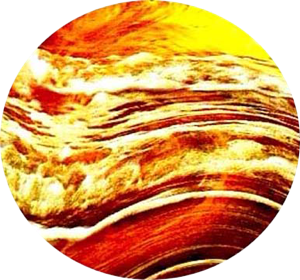Time Dusts

Conception & composition: Jean-Baptiste Barrière,
Image realization: Pierre-Jean Bouyer
Video & Stage Manager: Isabelle Barrière
Percussions: Thierry Miroglio
Time Dusts reworks and develops percussion materials composed for Peter Greenaway's show 100 Objects to Represent the World. Unlinked from this scenic context and from some related referential elements, they find back, here, their abstract and formal nature,
proceeding from musical ideas which are important to me, of timbral and rhythmic interpolations. They also allow me to develop, in this version commissionned and premiered at GRM in 2001 (the first version, commissionned by Kunitachi College in Tokyo, was created for the Festival Octobre en Normandie in 1998), the interactions between sonic and visual processes, which proceed then from the same formal preoccupations. At last, they serve me in a quest for a form of abstract narrativity in music.
A relatively restricted set of instruments (bell plate, low cow bell and tympani, corean gong, chinese cymbal, log drum, bongos, temple blocks, snare drum, crotales), was chosen to represent the different timbres families on a sort of conceptual map. Categories defined as such were then used to elaborate interpolations, formal developments which are constituting paths through the sonic material represented. A similar approach was carried out for rhythm, starting from archetypes, rhythmic characters.
Music then proceeds from explorations of qualities of time, lights and colors, and also of games on language, the latter appearing progressively in the electronics.
Each gesture of the percussion player is prolongated by the computer, triggering bits of language, processing of the sound of the instruments, synthesis of musical fragments; and also prepared sequences and processing of the live images of the percussionnist, as well as of different natural sources which were pre-recorded.
Like Cellitude, piece for cello and computer processing of sound and image, Time Dusts belongs to the Reality Checks series, which stages interactive situations under the form of installations, as well as concert pieces under the form of performances, both based on the confrontation, in one case of the spectator, in the other of the musician, to his/her own reflexion and its electronic becomings.
The sound of percussions are captured by microphones and transmitted to a Macintosh
running Max/MSP program, with which all the treatments are realized before to be spatialized around the audience. Two video cameras shooting the percusionnist are then simultaneously transmitted to two Macintosh, running Isadora program treating lively the images, which are then projected on two screens (one being circular and doubling a gong) behind the musician.
Sounds and images captured and transformed in real time are mixed and interpolated with pre-recorded sources comming from percussions and other origins, mainly natural.
Thus electronics function as a prolongation of instrumental writing, whose musical function seems to reveal a hidden becoming of instruments, to continue Gérard Grisey's sentence according to which "music is the becoming of sounds".
Here vowels and consonants prolongating percussive attacks and resonances, quasi-obsessional pulsations and polyrhythmies, are figures of a musical dramaturgy which takes place at the border of music, language and image.
<-
